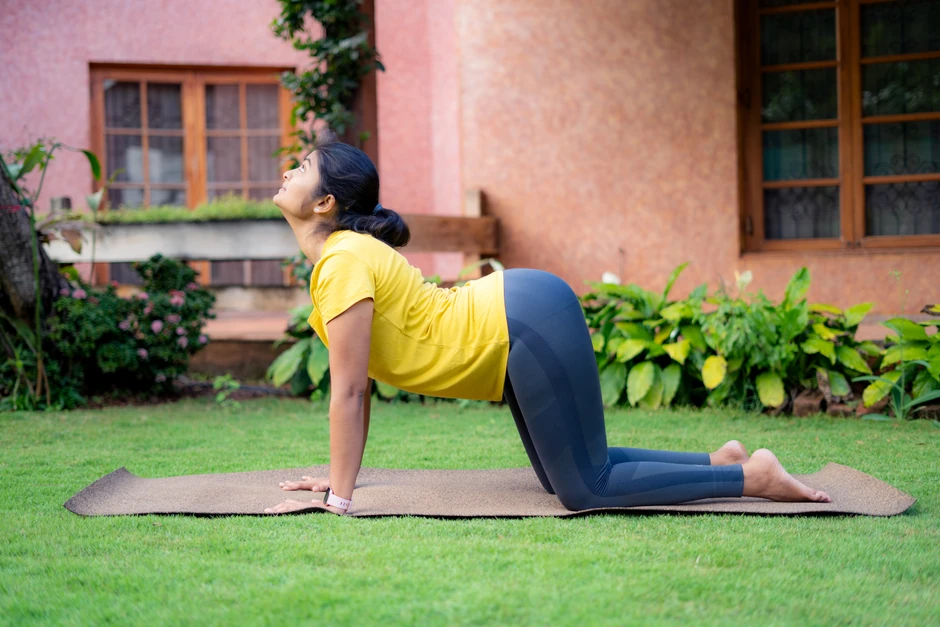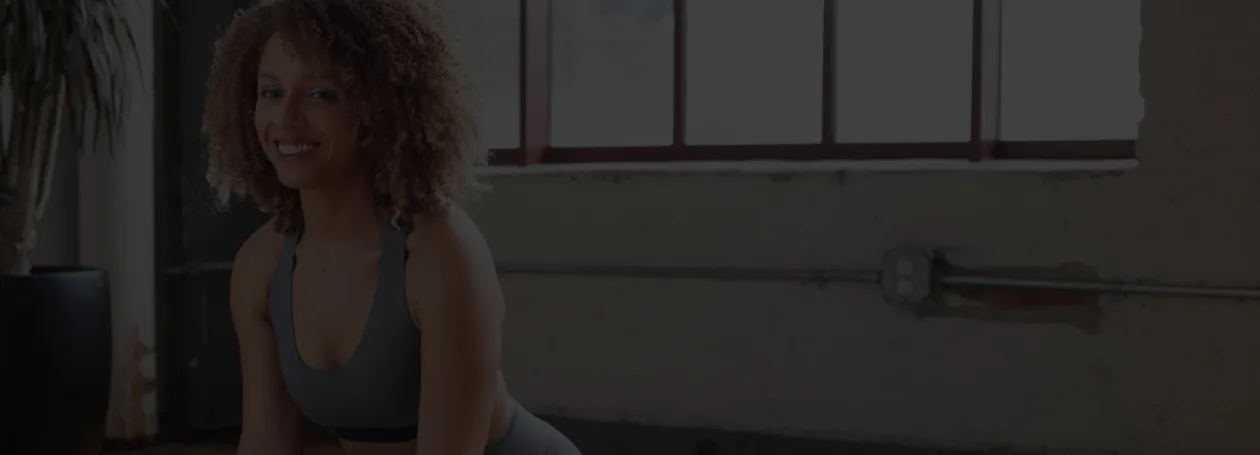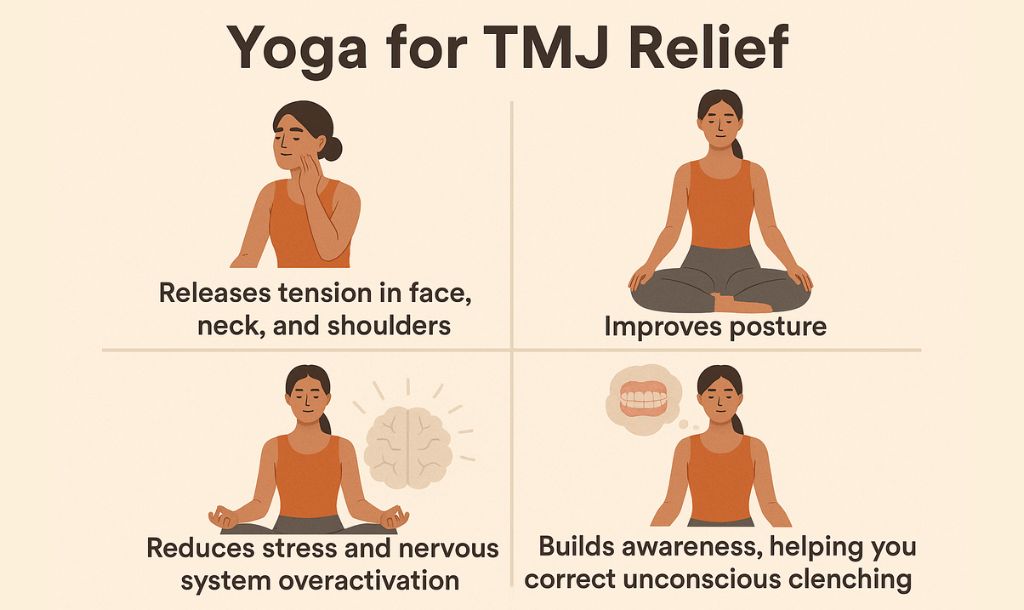What is Cat-Cow Pose (Marjaryasana-Bitilasana)?

Cat-Cow Pose (Marjaryasana-Bitilasana) is a gentle, flowing yoga sequence that alternates between flexing and extending the spine while synchronizing breath and movement. This beginner-friendly warm-up combines two poses—Cat Pose (Marjaryasana) and Cow Pose (Bitilasana)—to improve spinal mobility, relieve back tension, and prepare the body for deeper practice.
The rhythmic arching and rounding of the spine encourages better posture, body awareness, and mental relaxation. In many yoga traditions, Cat-Cow is taught as the foundation for understanding how breath and movement work together, setting the tone for mindful practice.
Cat-Cow Pose: Overview and Meaning of Marjaryasana-Bitilasana
The Sanskrit name Marjaryasana-Bitilasana combines two distinct poses: Marjaryasana (Cat Pose) and Bitilasana (Cow Pose). In Sanskrit, “Marjari” means cat, and “Bitila” means cow, while asana means posture. The flow visually resembles a cat stretching its spine and a cow gently arching its back while grazing.
Unlike many classical yoga postures found in ancient texts such as the Hatha Yoga Pradipika or Gheranda Samhita, Cat-Cow Pose (Marjaryasana-Bitilasana) is a modern yoga sequence. While the individual poses—Cat (Marjaryasana) and Cow (Bitilasana)—have traditional roots, the flowing combination of the two emerged in the 20th century as yoga evolved into a more dynamic and therapeutic practice.
As one of the most widely practiced yoga movements today, Cat-Cow is used in everything from gentle warm-ups and prenatal classes to office wellness routines and physical therapy. Alternating between spinal flexion and extension, the pose engages the core, back, shoulders, and hips to improve mobility, posture, and breath awareness. Each inhale and exhale gently releases tension and restores balance in the body.
At a Glance
- Sanskrit Names: मार्जरीआसन-बितिलासन (Marjaryasana-Bitilasana)
- Pronunciation: mar-jar-ee-AHS-anna / bee-tee-LAHS-anna
- Pose Type: Dynamic spinal warm-up, breath-synchronized flow
- Level: Beginner (suitable for all levels)
- Duration: 5–10 rounds (30 seconds to 3 minutes)
Benefits of Cat-Cow Pose (Marjaryasana-Bitilasana)
Whether you’re easing into your morning, taking a mid-work break, or preparing for deeper practice, this gentle spinal flow brings your body, breath, and mind into harmony.
Below are the key physical, mental, and therapeutic benefits of practicing Cat-Cow regularly.
Physical Benefits
- Improves spinal flexibility and mobility: Keeps the spine supple and counters stiffness from long sitting hours.
- Strengthens the core and back muscles: Strengthens the core to support spinal alignment and back health.
- Relieves back pain and tension: Gently eases tightness in the lower back, shoulders, and neck.
- Stretches neck, shoulders, and chest: Opens tight upper-body muscles and improves posture.
- Massages and stimulates digestive organs: Encourages healthy digestion through rhythmic movement.
- Warms up the entire body: Boosts circulation and prepares muscles for deeper poses.
- Eases menstrual discomfort: Relieves cramps through gentle pelvic movement and abdominal massage.
Mental & Emotional Benefits
- Reduces stress and calms the mind: Soothes the nervous system and lowers tension levels.
- Improves focus and mindfulness: Encourages present-moment awareness through breath and movement.
- Promotes relaxation and emotional balance: Releases stored tension, fostering calm and clarity.
Therapeutic Applications
- Pregnancy support: Safe throughout all trimesters when practiced gently with a wider knee position.
- Postpartum recovery: Reconnects the abdominal wall and spine safely.
- Desk worker syndrome: Counteracts slouched posture and restores spinal alignment.
- Arthritis and joint stiffness: Improves the lubrication and mobility of spinal joints.
- Stress-related tension: Calms muscle tightness triggered by emotional stress.
- Digestive sluggishness: Stimulates abdominal circulation for better digestion.
- Respiratory support: Opens the chest to allow deeper, fuller breathing.
How to Do Cat-Cow Pose (Marjaryasana-Bitilasana): Step-by-Step Guide
Cat-Cow Pose may look simple, but its power lies in precision — in how you move with your breath, not against it. Below is a complete, beginner-friendly guide to help you practice safely and effectively.
Part 1: Preparing for the Pose
Cat-Cow Pose is suitable for almost everyone — beginners, older adults, and those returning to movement after inactivity. It’s commonly used as a safe introduction to spine mobility and mindful breathing. Make sure you follow these tips:
- Choose your surface: A yoga mat or carpeted floor provides cushioning for knees and wrists.
- Warm up gently: Before starting, gently rotate wrists, roll your shoulders, and take a few seated spinal twists. This prepares your joints for smooth movement.
- Remove distractions: Create a calm space so you can focus on syncing movement with breath.
- Mindset: Approach the pose with ease, not effort — focus on how it feels rather than how it looks.
Part 2: How to do Cat-Cow Pose: Step-by-Step Instructions
- Come onto hands and knees with wrists under shoulders and knees under hips; spread your fingers, keep a long neck and neutral spine, and take a few steady breaths to center.
- Inhale through your nose as you drop the belly, lift the chest, broaden the collarbones, draw shoulders from the ears, raise the sitting bones, and gently lift the gaze without straining (Cow Pose).
- Pause briefly at the top of your inhale, sense the open chest and natural spinal curve, and prepare to reverse the movement.
- Exhale fully as you press the floor away, round the spine toward the ceiling, draw the navel in, tuck the tailbone and chin, and feel the back body lengthen (Cat Pose)
- Inhale to Cow and exhale to Cat, moving smoothly at the pace of your breath and imagining a wave traveling from tailbone to crown.
- Practice 5–8 rounds (1–2 min), 8–12 rounds (2–3 min), or 15–20 rounds (3–5 min), and stop if your breath becomes uneven—prioritize rhythm over repetitions.
- Finish in neutral tabletop, take 2–3 easy breaths, and optionally rest in Child’s Pose for a few breaths.
Breathing Pattern
Inhale into Cow (chest expands, spine arches, gaze lifts) and exhale into Cat (spine rounds, belly draws in, chin tucks). Let breath initiate movement; if breathing feels ragged, slow down. Quality of breath matters more than the number of repetitions.
Alignment & Safety Tips
- Keep wrists aligned under shoulders and knees under hips.
- Don’t force your neck — move it as a natural extension of your spine.
- Engage the core gently during both movements.
- Distribute weight evenly through your hands to protect wrists.
- Use a blanket or towel under your knees for support.
- Move slowly and mindfully; it’s not about reaching a shape, but feeling the flow.
- Stop immediately if you feel sharp or pinching pain.
Learn Cat-Cow Pose step-by-step with a coach. Book a free 1-on-1 session today!
Cat-Cow Pose Variations
One of the best things about Cat-Cow Pose (Marjaryasana-Bitilasana) is its versatility. Whether you’re a beginner, recovering from an injury, pregnant, or practicing at your desk, there’s a version of Cat-Cow that can meet you where you are.
These variations and modifications make the pose accessible to everyone while maintaining its core benefits.
Beginner Modifications
1. Hands on Blocks Cat-Cow
Reduces wrist strain and shoulder tension while maintaining alignment.
- Place yoga blocks under your hands in the tabletop.
- Flow through Cat–Cow with wrists stacked over blocks.
- Keep shoulders relaxed and spine fluid.
2. Forearm Cat–Cow
Removes wrist pressure and deepens shoulder stretch.
- Lower down onto forearms, elbows under shoulders.
- Inhale to arch, exhale to round.
- Move slowly, keeping breath steady.
3. Cat-Cow with Supported Knee Padding
Cushions and protects sensitive knees for pain-free practice.
- Place a folded blanket or double mat under your knees.
- Continue Cat–Cow with even weight distribution.
- Adjust padding until comfortable.
Intermediate Variations
4. Extended Cat–Cow (Leg Movement)
Builds core strength, balance, and hip mobility.
- From Cow, extend one leg straight back.
- From Cat, draw the knee toward the nose.
- Alternate legs every few rounds.
5. Side-to-Side Cat–Cow
Improves side-body flexibility and releases lower back tension.
- From tabletop, sway hips and head to one side.
- Switch sides, adding gentle hip circles.
- Move fluidly without forcing range.
6. Threaded Cat–Cow
Enhances spinal rotation and opens tight shoulders.
- From Cat, thread one arm under the chest.
- Rest your shoulder and cheek on the mat for a few breaths.
- Return to the flow and repeat the other side.
Advanced & Therapeutic Options
7. Cat–Cow in a Chair
Relieves back stiffness without needing a mat — ideal for office or seniors.
- Sit forward on a chair, feet flat, hands on knees.
- Inhale to arch, exhale to round.
- Breathe deeply and move slowly.
8. Standing Cat–Cow
Recharges posture and mobility anytime, anywhere.
- Stand with knees soft, hands on thighs.
- Inhale to arch, exhale to round the spine.
- Keep the neck aligned and breathe steadily.
9. Cat–Cow with Block Between Thighs
- Place a block between your inner thighs and squeeze gently.
- Flow through Cat–Cow while maintaining light pressure.
- Keep movements slow and controlled.
Cat-Cow Pose Precautions & Contraindications
While Cat-Cow Pose (Marjaryasana-Bitilasana) is one of the safest yoga movements, it’s still important to practice mindfully — especially if you’re managing injuries, medical conditions, or are new to movement.
Understanding when and how to modify this pose helps you practice with confidence and care.

Avoid Cat-Cow If You Have:
- Recent spinal or back surgery: Wait for medical clearance before attempting any spinal movement.
- Severe neck injury or cervical instability: The neck motion in Cat-Cow can aggravate symptoms.
- Acute wrist pain or injury: Weight-bearing on the hands may worsen discomfort.
- Severe osteoporosis: Deep spinal flexion or extension can increase fracture risk.
- Active back spasms or inflammation — Rest until the acute phase subsides before resuming gentle movement.
Practice with Caution or Modifications in case of:
- Pregnancy: Generally safe, but keep knees wider apart and avoid deep spinal extension.
- Wrist sensitivity: Try Forearm Cat-Cow or use yoga blocks under the hands.
- Knee discomfort: Add extra padding under knees or practice the chair version.
- Chronic back pain or disc issues: Begin with small, slow movements and focus on breath coordination rather than range of motion.
- High blood pressure or vertigo: Keep the head level with the spine instead of lifting or dropping it too far.
Safety Guidelines
- Never force your spine into a shape; comfort comes before depth.
- Stop immediately if you feel sharp or shooting pain (a mild stretch is fine, pain is not).
- Warm up wrists and shoulders before beginning.
- Use props freely — blankets, blocks, or supports make yoga more effective, not less.
- Lead with your breath — let it guide the motion and protect your joints.
- Always listen to your body; yoga is about awareness, not performance.
To practice Cat-Cow Pose with maximum safety, book a free 1-on-1 session today!
Cat Cow (Marjaryasana-Bitilasana): Related Yoga Poses
Cat-Cow Pose (Marjaryasana-Bitilasana) is often practiced as part of a warm-up or spinal mobility sequence. The following poses complement its movements, helping you deepen flexibility, release tension, and transition smoothly into your yoga flow.
Tabletop Position (Bharmanasana)
Builds the foundation for spinal alignment and stability in Cat-Cow and other yoga poses.
- Come onto hands and knees with wrists under shoulders and knees under hips.
- Spread your fingers, press evenly through palms, and lengthen the spine.
- Engage your core gently and draw your shoulders away from your ears.
Spinal Waves (Quadruped)
Increases spinal mobility and releases deep tension through smooth, flowing motion.
- Begin in Tabletop, inhale to arch the spine from tailbone to crown.
- Exhale to round the spine, letting the wave ripple through your back.
- Continue slow, fluid movements synced with breath.
Seated Cat-Cow (Chair Yoga)
Relieves stiffness and improves posture—ideal for desk workers or travel breaks.
- Sit forward on a chair, feet flat, hands on knees.
- Inhale to lift the chest and arch slightly, exhale to round the spine, and tuck the chin.
- Repeat 5–10 slow, mindful rounds.

Enjoy a Free 1-on-1 Session with a Coach!
Receive personalized guidance tailored to your unique fitness goals, live with a dedicated coach—no credit card required.
Frequently Asked Questions
Cat-Cow Pose improves spinal flexibility, core strength, and posture awareness. It relieves tension in the back and shoulders while calming the nervous system through rhythmic breath coordination.
Practiced regularly, it helps maintain a healthy spine, improves circulation, and reduces stiffness — especially for people who sit for long hours.
When it comes to Cat-Cow, it’s better to do fewer mindful rounds than many rushed ones.
- Beginners: 5–8 rounds (about 1–2 minutes)
- Standard practice: 8–12 rounds (2–3 minutes)
- Extended warm-up: 15–20 rounds (3–5 minutes)
Yes! Cat-Cow Pose is one of the safest and most effective yoga movements for relieving lower back pain. It gently mobilizes the spine, increases blood flow, and releases tension in the lumbar area. Start with small, slow movements and focus on smooth breathing.
If your pain is chronic or severe, consult a healthcare provider or practice under the supervision of a certified yoga teacher.
Yes, Cat-Cow is generally safe and highly recommended during pregnancy. It helps relieve back pain, supports spinal mobility, and creates space for the growing belly.
Just keep your knees wider apart and avoid deep arching in Cow Pose. Always move gently and consult your healthcare provider or a prenatal yoga coach if unsure.
Yes! The gentle compression and release of the abdomen in Cat-Cow massages the digestive organs, stimulating circulation and aiding digestion. Many practitioners find it helpful for reducing bloating and supporting healthy elimination, especially when practiced before breakfast or after long periods of sitting.
Wrist discomfort usually comes from tight wrists, uneven pressure, or poor hand placement.
Quick fixes:
- Spread fingers wide and press evenly through palms.
- Warm up wrists with circles or stretches before practice.
- Use yoga blocks under your hands or try the forearm version for full relief.
If pain persists, skip weight-bearing versions and consult a professional.



.webp)
%20(7).jpg)




